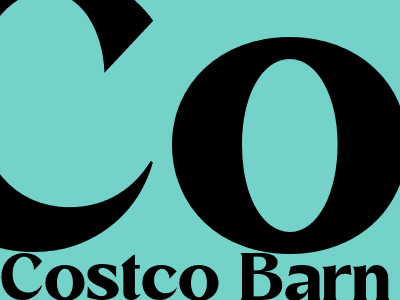Costco Barn: A Comprehensive Breakdown of its Impact on the Retail Landscape
Introduction
Costco Barn, a subsidiary of Costco Wholesale Corporation, has emerged as a significant player in the retail industry. Its unique business model and customer-centric approach have set it apart from competitors and solidified its position as a leading destination for bulk purchases. This in-depth analysis will delve into the various aspects of Costco Barn, exploring its history, business model, product offerings, target market, competitive landscape, and impact on the retail landscape.Costco Barn's History and Business Model
Costco Barn was founded in 1983 as a standalone division of Costco Wholesale Corporation. The first store opened in Sumner, Washington, and the chain quickly expanded across the United States. Costco Barn's business model is based on the concept of bulk purchasing, where customers can buy large quantities of products at discounted prices.
Costco Barn operates on a membership basis, with members paying an annual fee to access its stores. This membership fee enables customers to take advantage of exclusive discounts and promotions. Costco Barn's commitment to value and customer satisfaction has played a significant role in its growth and success.
Product Offerings and Target Market
Costco Barn offers a wide range of products, including groceries, home goods, appliances, electronics, furniture, and much more. The company emphasizes quality and variety, sourcing products from reputable suppliers and offering a diverse selection to meet the needs of its customers.
Costco Barn's target market is primarily families and individuals with a need for bulk purchases. Its focus on value and convenience has resonated with time-conscious consumers looking for ways to save money on household expenses. The company's membership base has steadily grown over the years, reflecting the loyalty and satisfaction of its customers.
Competitive Landscape and Impact on the Retail Landscape
Costco Barn operates in a competitive retail market, with established players such as Sam's Club, BJ's Wholesale Club, and Walmart. Despite the fierce competition, Costco Barn has maintained a strong position by differentiating itself through its membership model, exclusive product offerings, and superior customer service.
Costco Barn's impact on the retail landscape has been significant. Its bulk purchasing model has forced traditional retailers to adapt and offer similar services. The company's focus on value and convenience has also raised the bar for customer expectations, pushing other retailers to improve their offerings and pricing strategies.
Conclusion
Costco Barn is a retail powerhouse that has transformed the way consumers purchase goods. Its innovative business model, commitment to value, and customer-centric approach have established it as a leader in the industry. As Costco Barn continues to expand its reach and offerings, it will undoubtedly continue to shape the future of retail and meet the evolving needs of consumers.
The success of Costco Barn serves as a reminder that businesses can thrive by focusing on delivering value to customers and adapting to the changing retail landscape. By embracing innovation and customer-centricity, Costco Barn has not only secured its position in the market but also set a high standard for the entire retail industry.

Comments